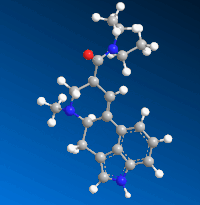'' Hydrogen, the most abundant element in the universe and third most abundant on the surface of the globe, is being visualised as the major furture source of energy''.
Hydrogen has the simplest atomic structure among all the elements around us in Nature. In atomic form it consists of only one proton and one electron. However, in elemental form it exists as a diatomic (H2) molecule and is called dihydrogen. It forms more compounds than any other element.
Do you know that the global concern related to hyt ad a source of energy?
In fact, hydrogen is of great industrial importance as you will learn in this article.
Position of Hydrogen in the periodic table:
Hydrogen is the first element in the periodic table. However, its placement in the periodic table has been a subject of discussion in the past. As you know by now that the elements in the periodic table are arranged according to their electronic communications.
Dihydrogen, H2
Dihydrogen is the most abundant element in the universe (70% of the total mass of the universe); and is the principal elements in the solar atmosphere. The giant planets Jupiter and Saturn 🪐 consists mostly of hydrogen.
However, due to its light nature, it is much less abundant (0.15.4% of the earth's crush and the oceans. In the combined form besides in water, it occurs in plant and animal tissues, carbohydrates, proteins, hydrides including hydrocarbons and many other compounds.
Uses of Dihydrogen
• The largest single use of dihydrogen is in the synthesis of ammonia which is used in the manufacture of nitric acid and nitrogenous fertilizers.
• Dihydrogen is used in the manufacture of vanaspati fat by the hydrogenation of polyunsaturated vegetable oils like soyabean, cotton seeds etc.
• It is widely used for the manufacturer of metal hydrides.
• It is used for the preparation of hydrogen chloride, a highly useful chemical.
• In metallurgical processes, it is used to reduce heavy metals oxides to metals.
• Atomic hydrogen and oxy-hydrogen torches find use for cutting ✂️ and welding purposes. Atomic hydrogen atoms (produced by dissociation of dihydrogen with the help of an electric arc) are allowed to recombine on the surface to be welded to generate the temperature of 4000K.
• It is used as a rocket 🚀 fuel in space research.
• Dihydrogen is used in fuel cells for generating electrical energy. It has many advantages over the conventional fossil fuels and electric power. It does not produce any pollution and release greater energy per unit mass of other fuels.
Hydrides
Dihydrogen, under certain reaction conditions combines with almost all elements except noble gases, to form binary Compounds, called hydrides. If 'E' is the symbol of an element then hydrides can be expressed as EHx (e.g., MgH2) or EmHn (e.g, MgH2).
The hydrides are classified into three categories:
• Ionic or saline or saltike hydrides.
• Covalent or molecules hydrides.
• Metallic or non- stoichiometric hydrides.











